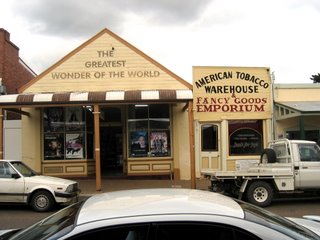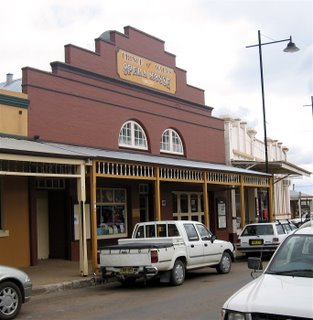


Here's a stunner: "There is little scientific evidence to suggest that organic matter has any unique properties that cannot be done without." This is how Charman and Roper open their chapter of Soil Organic Matter in my new text book SOILS by Charman and Murphy. This statement perfectly encapsulates the "Soil as Mere Medium" ideology. It holds to the belief that soil provides nothing apart from the ability to receive chemicals, hold and release them to plants or pests. The giant petrochemical and fertiliser companies and the giant farm equipment companies won the ideological war in the 1930s and the science naturally favoured Scientific Farming (vs Natural Farming). Their legacy: depleted soils, poisoned waterways and greenhouse skies.
Far from being objective, scientific enquiry is directed by a set of beliefs about the nature of matter that determine the outcomes of enquiry, according to scientist and philosopher Thomas Kuhn in his book 'The Structure of Scientific Revolutions'. These are called Paradigms. Students are taught them; academics write papers whose findings support them because their peers exercise a form of group-think by refusing to approve for publication work that is not conventional, ie. that does not perpetrate the Paradigm. If you don't believe me, look at the way mankind's knowledge of the nature of matter has evolved from Aristotelian "solid objects" to Newtonian "particles" and atoms, to Einstein and quantum mechanical packets of light energy that sometimes act like waves and sometimes act like particles... As each Paradigm fell, some people lost position, preferment, and power. Other people gained these things. This is why the battle is political, not scientific.
The existence of a ruling paradigm which overturned a previous paradigm tells us one important thing: there's another paradigm a'coming! And the 'revolution' which must take place to overturn the current paradigm started long ago. The new paradigm is based on the theory that there lies hidden away from dominant paradigm scientists an entire universe of natural systems and forces that can be used to support the production of agricultural goods. This universe includes natural processes, networks and interactions, transmissions of energy in various forms, and patterns of potential that can operate only when acknowledged and sought. Much of it is dismissed as quackery, and much of it might be. But one fact stands like a beacon in the darkness: there is a new paradigm coming. Question: Is it better to be searching for the new vision than defending the old?
The reason why now is the right time for serious consideration of many ancient and not so ancient natural farming practices is because the natural resource base of the nation and the world is in crisis. Australia has lost 50% of its topsoil in 200 years and 50% of its soil organic matter in 20 years of scientific farming. The economics of agriculture is also in crisis. The falling line charting prices is meeting the rising line charting input costs. The scientific farming model is entering a period of challenge. Soil as mere medium is no longer Gospel. The popularity of controlled grazing, minimum tillage, pasture cropping, biological farming and Natural Sequence Farming, plus the growing demand for organic products, coincides with the greatest environmental challenge since the last Ice Age.
The time could be coming for those who believe a new paradigm is inevitable to form a self-supporting community, similar to the one that supporters of the old paradigm have formed. Not an association or a federation, but a Movement - and Action movement that has a limited number of clearly defined goals that, once achieved, will see the Movement shut down. (Too many organisaitons past their use-by date refuse to fall on their swords.) Membership of the Natural Farmers' Movement could be open to all landholders who use techniques that mimic Nature or which seek to harmonise with Nature's processes.
There's strength and confidence in numbers. Instead of feeling like a misfit, members of such a large body will feel proud.

 THROWING THE FLEECE: THERE'S A KNACK TO IT
THROWING THE FLEECE: THERE'S A KNACK TO IT LOUISA SKIRTING THE FLEECE: TRIMMING OFF THE POOR QUALITY WOOL
LOUISA SKIRTING THE FLEECE: TRIMMING OFF THE POOR QUALITY WOOL














